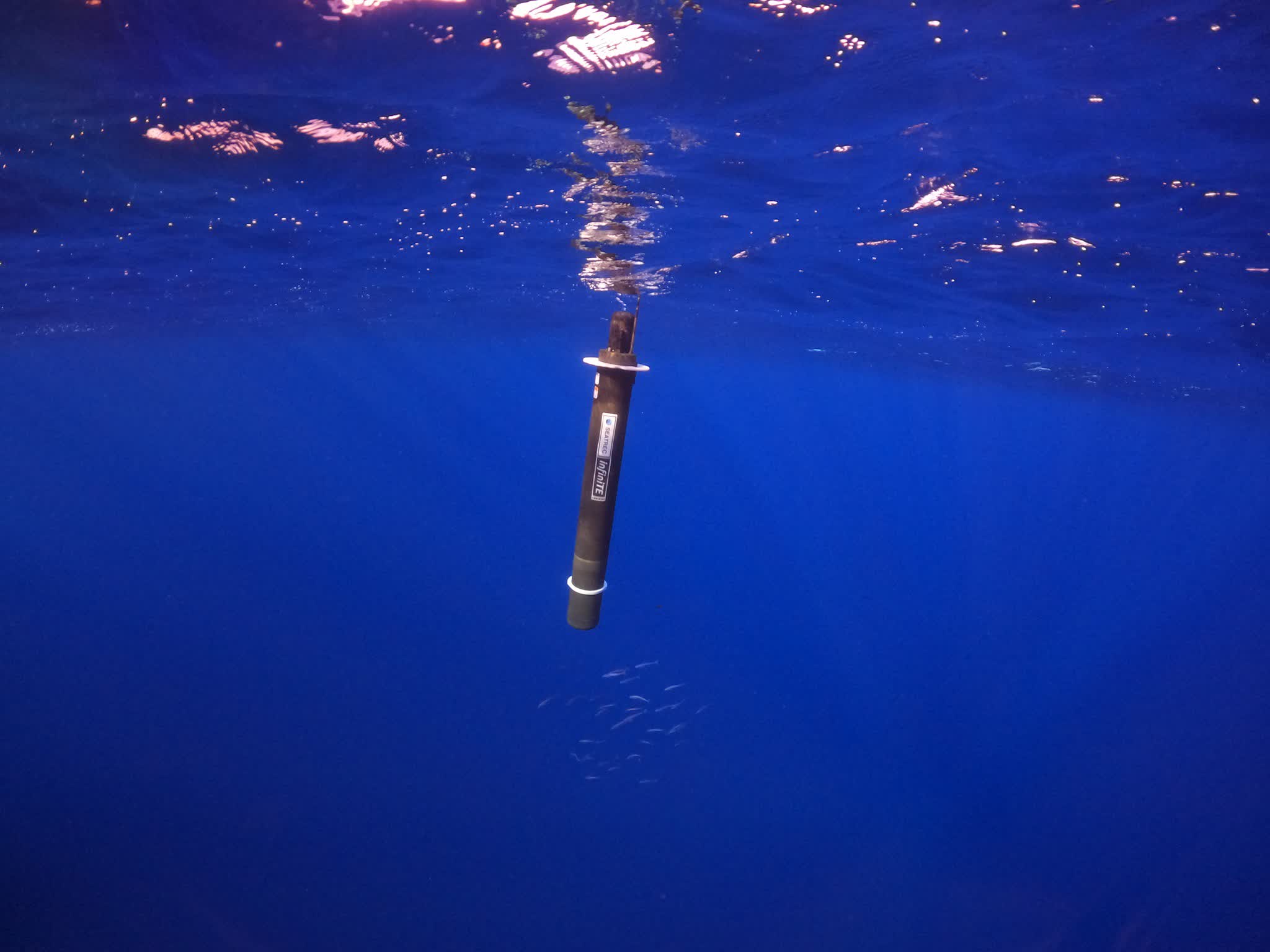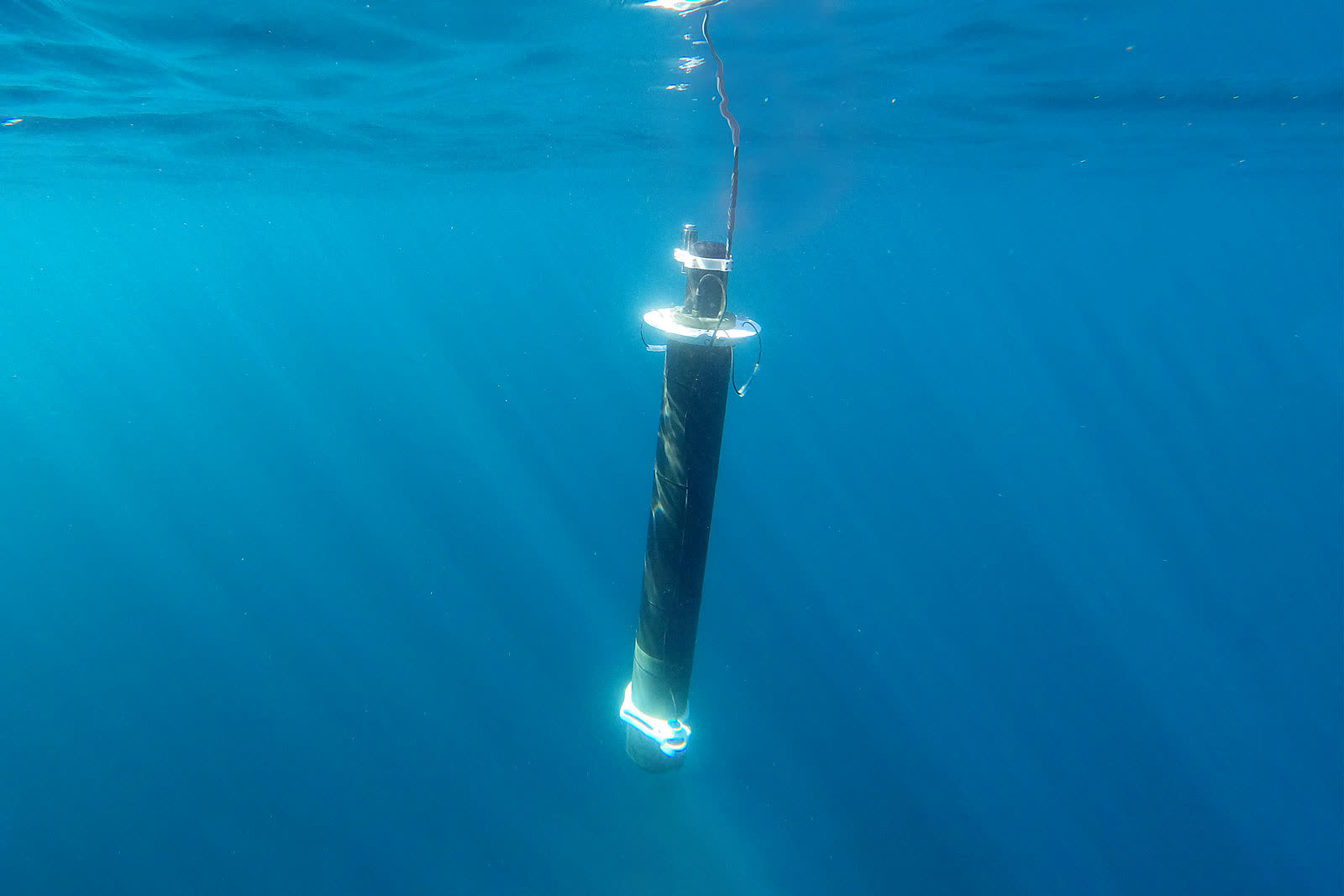The big picture: Exploring the depths of the world's oceans has been an immense challenge – even more difficult than space exploration in some cases. The main issues are the brutal pressure and temperatures that render substantial chunks of the seafloor entirely off-limits to human divers. However, a California tech company may have cracked the code on sustainable ocean exploration.

Seatrec has invented a new type of underwater robot that can theoretically roam the seas indefinitely without needing to refuel or recharge its batteries. Instead, it harnesses kinetic energy produced by temperature fluctuations to generate power. The company touts the system's elimination of dead battery litter on the seafloor – an advantage over conventional underwater robots.
The system resembles a cylindrical buoy and has been aptly dubbed "infiniTE float." It relies on phase-change materials that swap between solid and liquid states as the robot dives and surfaces.
The unique material has a melting point of around 50º F (10º C), which sits between average ocean temperatures of around 40º F (4.4º C) and surface temperatures of around 70º F (21.1º C), making it perfect for the job. So, as it plunges into the chilly depths, a paraffin-based material solidifies and contracts, forcing hydraulic fluid through a tiny generator to charge the bot's batteries. The material melts and expands when it moves toward the warmer surface waters, kickstarting the cycle again.

Seatrec founder and CEO Yi Chao first prototyped the concept in 2011 while working at NASA's Jet Propulsion Laboratory. After over a decade of R&D, the startup is finally bringing the drones to the market. The Robot Report notes that the company is also selling its first power module for self-charging diving floats to research labs, universities, government agencies, and the military.
This technology could open up a bunch of ocean exploration and monitoring opportunities. For starters, oceanographers could map out the estimated 80% of the ocean floor that remains uncharted territory. Seatrec has also field-tested the bot by measuring hurricane intensity in the Gulf using prototypes.
The company is partnering with the University of Southern Mississippi's Roger F. Wicker Center for Ocean Enterprise to study critically endangered Rice's whales in the Gulf of Mexico. They'll deploy two versions of the infiniTE float system – one tracking ocean conditions like temperatures that impact the whales' habitat and another using hydrophones to listen for the creatures.
Chao anticipates strong demand from industries like telecoms laying undersea cables, offshore oil/gas drillers, wind farm developers, environmental groups mapping marine habitats, and companies needing to monitor seafloor equipment and conditions.
Looking ahead, Seatrec said it plans to commercialize phase-change power for underwater gliders next, followed by higher-output liquid-to-gas energy harvesting systems capable of recharging multiple robots simultaneously.
NASA spin-off's new robot can explore oceans autonomously without recharging